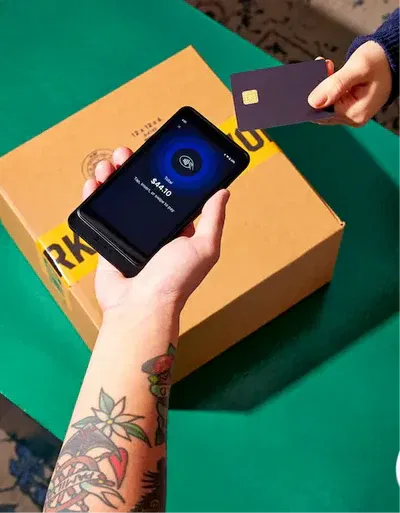Best Places to Code a Website for Beginners in 2025
🧑💻 The Best Place to Code a Website for Beginners in 2025 (Complete Guide)
So you’ve decided to build your own website. Maybe it’s for your new side hustle, a blog about your travel adventures, or your freelance portfolio. Whatever the reason, you’re asking the right question:
“What’s the best place to code a website for beginners?”
If you’re in the U.S., have no formal computer science background, and are wondering how to build a web page using HTML, you’re not alone. Thousands of people just like you are exploring basic website programming to bring their ideas online—without needing to become full-time developers.
In this detailed guide, I’ll walk you through:
-
The best platforms to code a website from scratch
-
Where to practice web page code
-
Step-by-step web design coding examples
-
Tools, tips, and resources for coding beginners
Let’s dive in.
| Platform | Best For | Free to Use | Live Preview | Supports HTML/CSS/JS | Beginner-Friendly | Hosting Capabilities | Link |
|---|---|---|---|---|---|---|---|
| W3Schools TryIt | Learning syntax, HTML basics | ✅ Yes | ✅ Yes | ✅ HTML/CSS | ✅ Very Easy | ❌ No | w3schools.com |
| CodePen | Practicing front-end coding | ✅ Yes | ✅ Yes | ✅ HTML/CSS/JS | ✅ Easy | ❌ No | codepen.io |
| Replit | Full project builds and deployment | ✅ Yes | ✅ Yes | ✅ HTML/CSS/JS | ✅ Very Easy | ✅ Yes | replit.com |
| GitHub Pages | Hosting static HTML websites | ✅ Yes | ❌ No (manual) | ✅ HTML/CSS | ⚠️ Intermediate | ✅ Yes | pages.github.com |
| Glitch | Collaborating & building small sites | ✅ Yes | ✅ Yes | ✅ HTML/CSS/JS | ✅ Moderate | ✅ Yes | glitch.com |
| Visual Studio Code | Offline practice, deeper learning | ✅ Yes | ❌ No (needs browser) | ✅ HTML/CSS/JS | ⚠️ Advanced | ✅ With GitHub | code.visualstudio.com |
📌 Why Learn Website Coding as a Beginner?
Before we dive into the best place to code a website for beginners, let’s talk about why you should learn website coding in the first place.
Here’s what you get when you learn how to make a website using code:
-
✅ More control over design and features
-
✅ Customization not possible in drag-and-drop builders
-
✅ Deeper understanding of how the internet works
-
✅ No reliance on expensive developers
-
✅ A skillset that’s in demand
Learning how to code a website in HTML or CSS is like learning a new language—it opens the door to countless creative and professional opportunities.
🧠 The Basics: What Is Website Coding?
Website coding is the process of writing instructions (code) that a web browser understands, resulting in a visual, interactive page.
The three core languages you’ll start with:
| Language | Purpose |
|---|---|
| HTML | Defines structure – headers, paragraphs, links |
| CSS | Adds style – fonts, colors, layout |
| JavaScript | Adds interactivity – sliders, forms, animations |
When you’re coding a website in HTML, you’re telling the browser how to arrange and display content. With CSS, you style that content. Add JavaScript to make things move or react.
🏆 The Best Place to Code a Website for Beginners: Top Platforms
Here’s a breakdown of the best places to code a website for beginners in 2025:
| Platform | Best For | Free Plan | What You Can Do |
|---|---|---|---|
| CodePen | Front-end HTML/CSS/JS practice | ✅ Yes | Instant preview while you type |
| Glitch | Building small websites | ✅ Yes | Realtime collaboration, Node.js support |
| Replit | Full-stack beginner projects | ✅ Yes | Build, host, and share websites in one place |
| GitHub Pages | Hosting simple HTML/CSS sites | ✅ Yes | Great for portfolios and learning version control |
| Visual Studio Code + Local Setup | Deep learning locally | ✅ Yes | Learn how to code a website from scratch |
| W3Schools Tryit | Basic syntax practice | ✅ Yes | Perfect for absolute beginners exploring how to build a simple web page |
If you’re truly starting from zero, W3Schools Tryit Editor is the best place to begin. Once you’re comfortable, move to CodePen or Replit for real projects.
🚀 Step-by-Step: How to Create a Website Through HTML
If you’re wondering how can I create a website using HTML, here’s a basic starter example you can build right now using CodePen.
📄 HTML (Structure)
font-family: Arial;
background-color: #f0f0f0;
color: #333;
}
⚙️ JavaScript (Interactivity)
You’ve just learned how to build a website using HTML, style it with CSS, and add JavaScript!
🎓 What You’ll Learn by Coding a Website From Scratch
When you’re practicing in the best place to code a website for beginners, you’ll pick up core web development skills:
-
Writing valid HTML5 code
-
Applying CSS for layout and typography
-
Using web page design code principles like grids and flexbox
-
Adding image sliders, buttons, and links
-
Learning version control with Git
-
Hosting your site using GitHub Pages or Replit
You’ll also start understanding how websites load, how they interact with browsers, and how search engines see your pages—essential for long-term success.
📚 Additional Resources to Learn Website Coding
Want to level up beyond the best place to code a website for beginners?
Check out these FREE resources:
These platforms teach you everything from how to make a simple webpage to how to build a web page using HTML and CSS grids.
💡 Common Beginner Questions (and Expert Answers)
❓ How do I make my website responsive?
Use media queries in CSS and flexbox or grid layouts. Sites like CodePen let you test responsiveness live.
❓ How can I create a website using coding for my portfolio?
Start with a one-page HTML template. Use GitHub Pages to host it for free and link it on your resume.
❓ What is the easiest way to learn how to code a website in HTML?
Use W3Schools TryIt. It lets you write code and see the result instantly—perfect for web page tutorial beginners.
❓ Can I create a homepage with design code?
Yes. A simple website homepage design code might look like this:
This is the foundation of your site’s navigation and visual branding.
📊 Table: Beginner Platform Comparison
| Tool | Live Preview | Free Hosting | Offline Support | Best Feature |
|---|---|---|---|---|
| CodePen | ✅ Yes | ❌ No | ❌ No | Fastest feedback loop |
| Replit | ✅ Yes | ✅ Yes | ✅ Yes | Project sharing & backend access |
| GitHub Pages | ❌ No (setup required) | ✅ Yes | ✅ Yes | Great for learning deployment |
| W3Schools TryIt | ✅ Yes | ❌ No | ❌ No | Structured tutorials |
| VS Code + Local | ❌ No | ✅ With GitHub | ✅ Yes | Best for full-stack skills |
💬 Real Talk: My Experience Starting Out
When I started learning how to code a website from scratch, I used W3Schools to understand basic tags. Then I moved to CodePen for live testing. Finally, I deployed my site using GitHub Pages—all without spending a dollar.
If you’re asking, “How to create a website using coding when you don’t know where to start?”, just start small. Don’t overthink it. Build something. Break it. Then fix it.
That’s how real developers learn.
🧩 When Should You Move Beyond Basic HTML?
Once you feel confident in:
-
Writing complete HTML pages
-
Using CSS layouts and typography
-
Understanding web page code structure
…it’s time to learn JavaScript, then explore frameworks like React or backend tools like Node.js.
But remember, all of them still build upon the foundation you’ll learn in the best place to code a website for beginners.
🧠 Frequently Asked Questions: Best Place to Code a Website for Beginners
Starting your website development journey can be exciting—but also overwhelming. If you’re searching for the best place to code a website for beginners, you’re in the right spot. Below, we’ve compiled answers to the top 15 frequently asked questions from users just like you, aiming to understand website coding and how to build a website using HTML from the ground up.
1. What is the best place to code a website for beginners?
The best place to code a website for beginners depends on your learning style and goals. If you want instant results with no setup, CodePen is a top choice. If you’re looking to build HTML sites that can go live on the web, Replit or GitHub Pages are excellent.
For pure learning, platforms like W3Schools TryIt and freeCodeCamp are goldmines. Each of these supports website coding in HTML, CSS, and JavaScript—three essential building blocks of the web.
2. What do I need to learn first to start coding a website?
To get started with website coding, begin with the fundamentals:
-
HTML – Learn how to build a website using HTML. This forms the structure of your web page.
-
CSS – Learn how to style your web pages. CSS controls colors, fonts, layout, and spacing.
-
JavaScript – For interactivity, like image sliders, form validation, or animations.
Once you’re comfortable with these, explore how to create a website through HTML and add more advanced tools like frameworks (e.g., Bootstrap, Tailwind).
3. Can I really create a website using just HTML and CSS?
Yes, you can! While basic, HTML and CSS are powerful enough to build static, professional-looking sites. If you’re learning how to code a website in HTML, a good place to start is HTML5 Boilerplate, which gives you a clean setup.
You’ll be able to:
-
Create structured layouts
-
Add custom styling
-
Develop multiple pages
-
Host them via GitHub Pages or Replit
That’s why HTML/CSS is key for anyone asking how to make a website using code as a beginner.
4. What’s the difference between website coding and using a website builder?
Website coding means manually writing code like HTML, CSS, and JavaScript to create your site from scratch. It offers more control and customization.
A website builder (like Wix or Squarespace) lets you drag and drop elements, but you’re limited by templates and platform constraints.
Learning how to make a website using coding gives you the skills to:
-
Customize every element
-
Improve performance
-
Learn transferable skills
-
Understand the internet’s foundation
Builders are fast, but coding is powerful.
5. What’s the best HTML editor for beginners?
If you want a downloadable program to code a website from scratch, try:
-
Visual Studio Code – Free, customizable, and supports HTML/CSS/JS with real-time preview
-
Sublime Text – Lightweight and fast
-
Brackets – Designed for web development beginners
These editors let you write and test web site code, follow indentation, and highlight errors—perfect for beginners learning how to design a web page using HTML.
6. How long does it take to learn how to code a website from scratch?
If you’re learning full-time, you can expect to:
-
Understand basic website programming in 1–2 weeks
-
Build and deploy simple websites in 3–4 weeks
-
Gain solid confidence in web design coding in 6–8 weeks
Part-time learners may take 2–3 months. The key is consistency and choosing the best place to code a website for beginners that provides immediate feedback and encouragement.
7. What is web page design code?
Web page design code is the combination of HTML (structure), CSS (style), and optionally JavaScript (behavior) used to build the front-end of a website.
A sample website homepage design code includes:
Design code helps define visual layout, page flow, and user interaction—key to understanding how to make a website using coding.
8. How do I host my coded website online?
Once you’ve built your site, you’ll want to publish it. Here’s how:
-
GitHub Pages – Great for static HTML/CSS pages
-
Netlify – Simple drag-and-drop or Git-based deployments
-
Replit – Code and host in one place
These platforms are ideal if you’re looking to create a website from code and share it online for free.
9. How can I learn to build a responsive website from scratch?
Responsive websites adapt to screen sizes (mobile, tablet, desktop). You’ll need:
-
CSS Flexbox and Grid – Layout tools that make your design flexible
-
Media Queries – Change styling based on screen size
Start by coding a page using HTML/CSS and testing it using browser tools. CodePen and Glitch are ideal places for testing responsiveness live.
Learning how to build a simple web page that’s responsive will help you grow quickly.
10. Can I build a personal portfolio website as a beginner?
Yes! A portfolio is often the first real project people build when exploring how to create a website using coding.
Use these elements:
-
A clean homepage
-
About section
-
Project gallery
-
Contact form
Platforms like GitHub Pages and Replit are great for hosting. This is the perfect way to apply everything from how to code a website in HTML to styling with CSS and even adding JavaScript.
11. Are there free templates I can use while learning?
Definitely. While learning how to make a website using HTML, you can start with templates and then customize.
Great sources:
They offer layouts you can edit, helping you understand coding for website creation even before you write everything from scratch.
12. How do I add interactivity to my website?
To go beyond static pages, you’ll need JavaScript. It allows you to:
-
Show popups
-
Add image sliders
-
Create dynamic forms
-
Control animations
Once you master how to build a website using HTML, JavaScript adds behavior. Use platforms like CodePen to experiment with interactive elements in real-time.
13. What mistakes should beginners avoid when coding their first site?
-
❌ Using too many fonts or colors
-
❌ Not testing on mobile devices
-
❌ Ignoring indentation and code organization
-
❌ Forgetting to save backups
-
❌ Skipping SEO fundamentals (like using proper headings)
These are common for people learning how to build a simple web page, so don’t worry—you’ll get better with practice.
14. Can I practice HTML and CSS without installing anything?
Yes! Use browser-based editors like:
These tools let you write, edit, and preview web page code live. They’re ideal for mastering how to create a website using coding without setting up a local environment.
15. What’s the fastest way to become confident in website coding?
Here’s a roadmap to success:
-
Learn HTML basics using W3Schools
-
Build a small project on CodePen
-
Add CSS and JavaScript for style and interactivity
-
Host your site using GitHub Pages
-
Repeat the process with a new project
Stick with this plan, and you’ll know how to code a website from scratch in less than a month.
📣 Final Thoughts: So, What’s the Best Place to Code a Website for Beginners?
If you’re just starting out, here’s what I’d recommend:
-
Absolute beginner? Start at W3Schools TryIt Editor.
-
Want to build and host live sites? Use Replit or GitHub Pages.
-
Ready to grow? Move to Visual Studio Code and explore deeper.
The best thing? You can combine these platforms as your skills improve.
🎯 Ready to begin your journey?
Choose one platform from this list, open it in a new tab, and build your first “Hello World” page today. Because the best place to code a website for beginners… is wherever you start.




